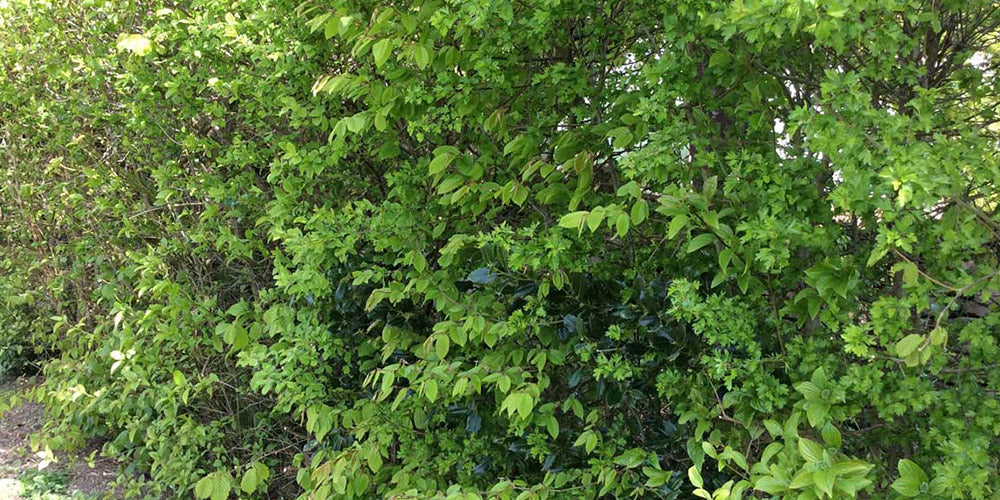Hedges have been planted & tended for a long time in Ireland. It is likely that man was deliberately planting trees as long ago as the Bronze Age. The origins of the first 'plant nursery' are lost in the depths of time. Was it when a man, or woman, pulled up a little plant and moved it to where they wanted it ? or broke off a piece of willow and pushed it in the ground near their living quarters to make basket making easier ?
Undoubtedly some of the earliest fences were made from willow and hazel rods stuck into the ground and woven and often the willow would have taken root. Later the need for stock proof hedges would have brought Hawthorn & Blackthorn to the attention of the farmer.
Some plants like Dogwood & Native Privet would have been taken as cuttings, others, such as Holly, dug up from the wild. I wonder to what extent hazel was deliberately planted or how much was it spread through the hedgerows by squirrels and hedgehogs ?
Birds would certainly have spread berrying plants like Elder and the wild roses. Some plants seem to have had a more local distribution like Alder Buckthorn, Whitebeam, Bird Cherry and the Killarney Strawberry Trees, Arbutus.

Over the last 100 years, many old hedgerows have been uprooted as towns & villages extend into the countryside, roads are widened and small fields are merged into big ones yet we still need to plant hedges to provide privacy & shelter round our homes and gardens. Choosing to plant a mixed native hedge conserves our natural heritage, helps our environment by providing food and shelter for a whole range of wildlife: animals, birds, bees, butterflies & insects as well as giving us year round interest & beauty.
Planning a Hedge

So if we are thinking of planting a hedge these days, what species should we plant and how should we go about it ?
A lot depends on the space available & how neat you want the hedge to be. There is no point in planting Crabapple in a hedge that needs to be kept 4 to 6ft high. Some plants can take hard cutting and be kept under control, others need more room to flourish and create a 'wilder' look. If you can go higher than 20ft with your hedge or screen then you could always include some native trees, planting one for every 30 ft of hedge.
Planting a Hedge
Bare-root whips can be planted from November to April. For a neat hedge, plant at 1ft spacing in a staggered row; for a taller, wilder hedge plant at every 1.5 to 2ft.
Start by clearing the ground of any perennial weeds like docks or couch grass. It is usually best to plant in a trench wide and deep enough to take the roots comfortably, taking care that they do not dry out while you are at the job. In very dry weather it can be useful to have a bucket of muddy water handy to dip the roots in. After planting, firm well and cut back any extra long whippy growths. During the summer, remove any competing grass or weeds that might smother the young plants and you may have to water if there is a prolonged dry spell.
Please see our website for current mixed hedges.



